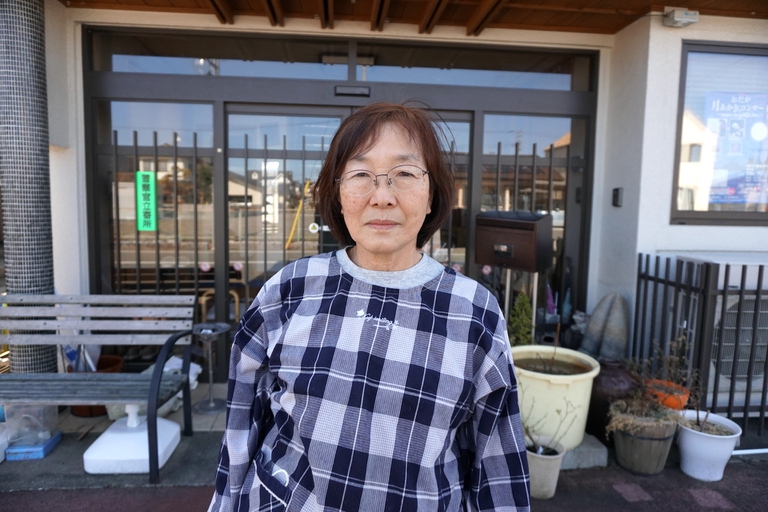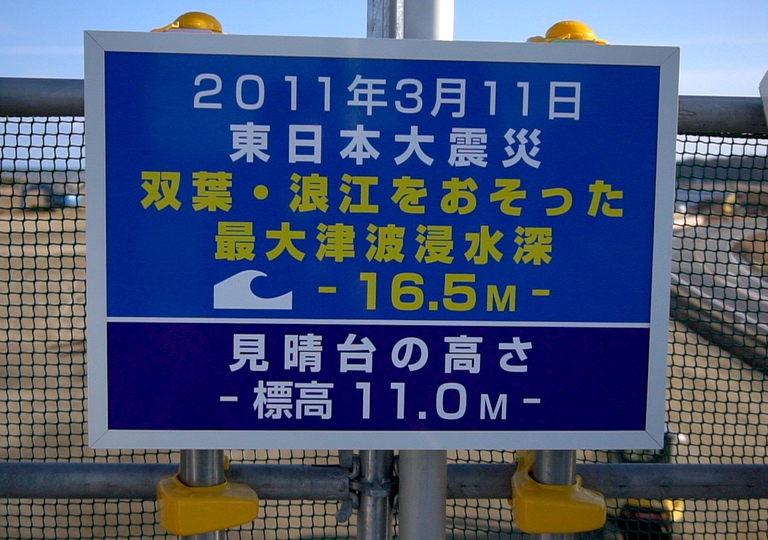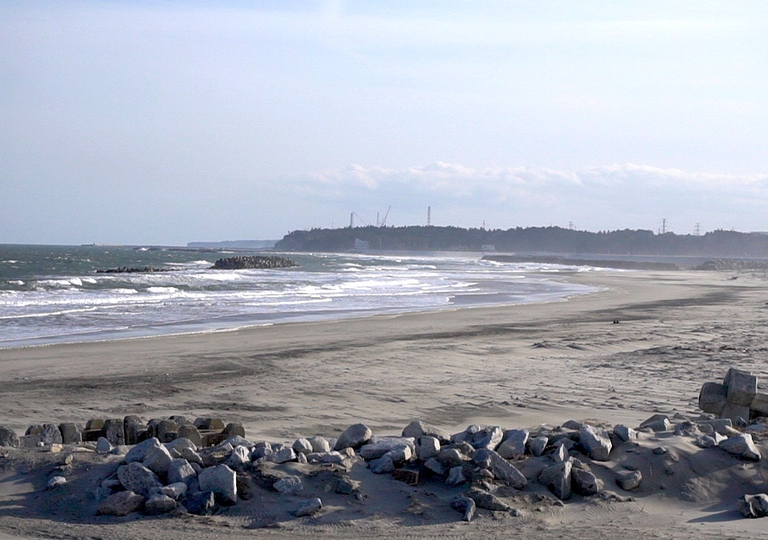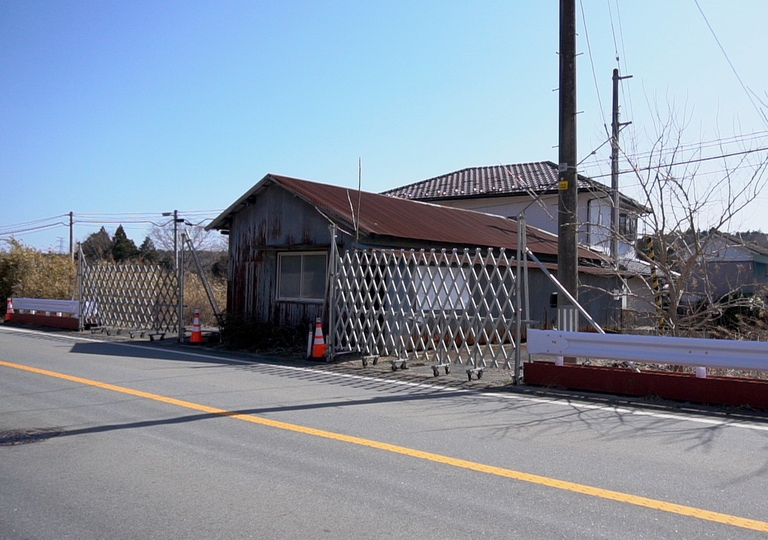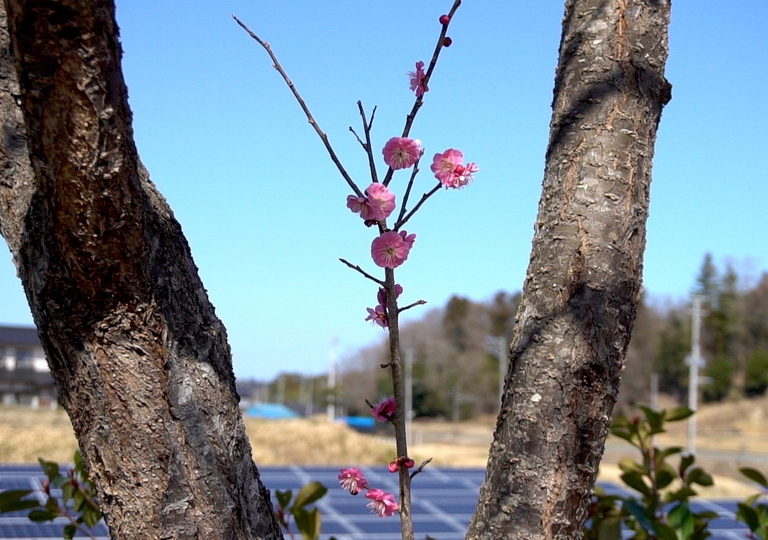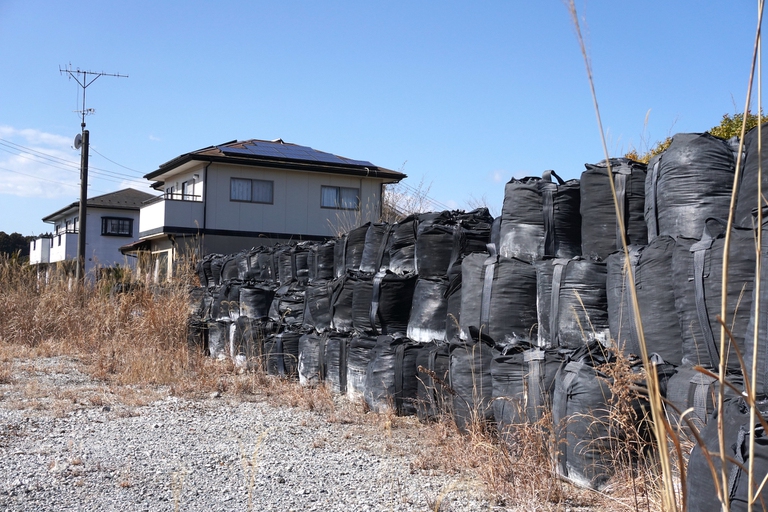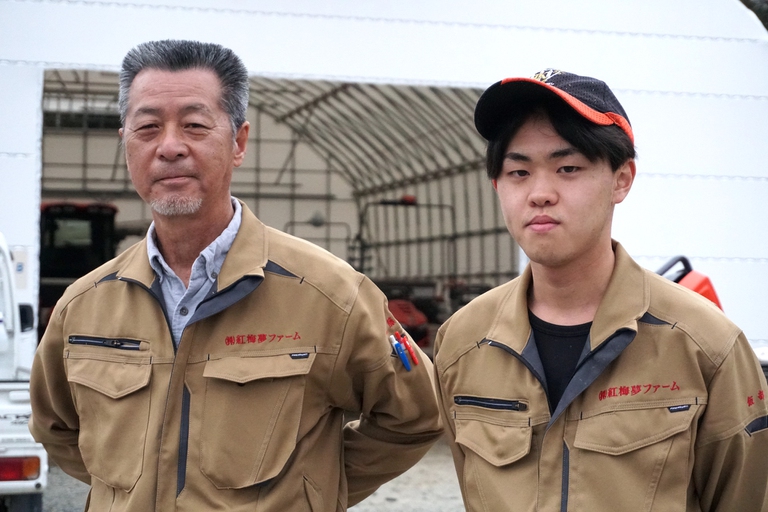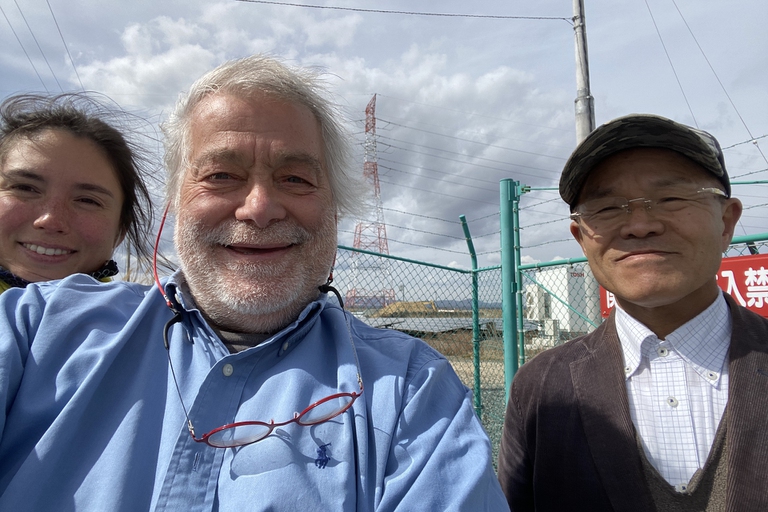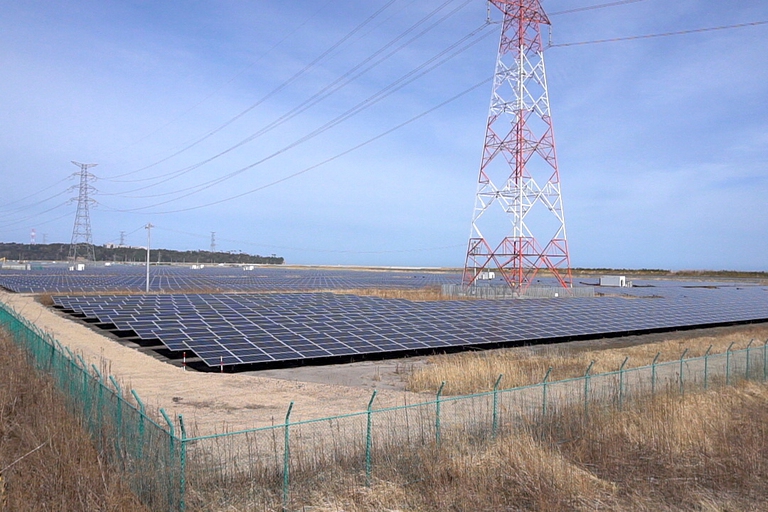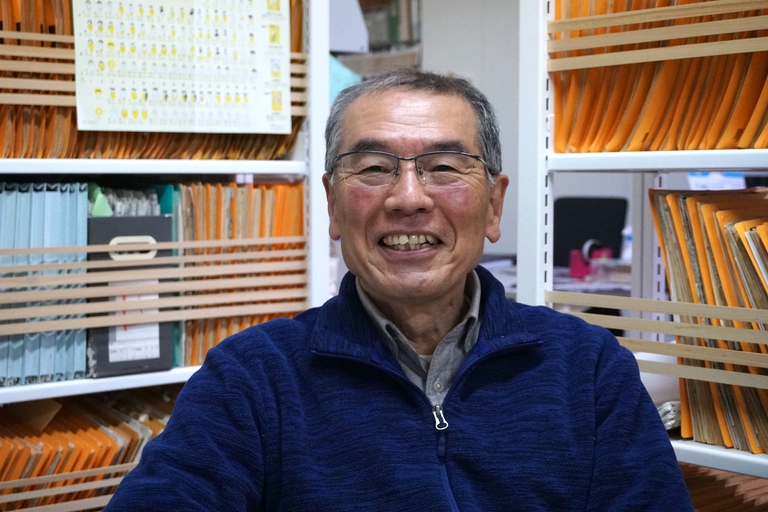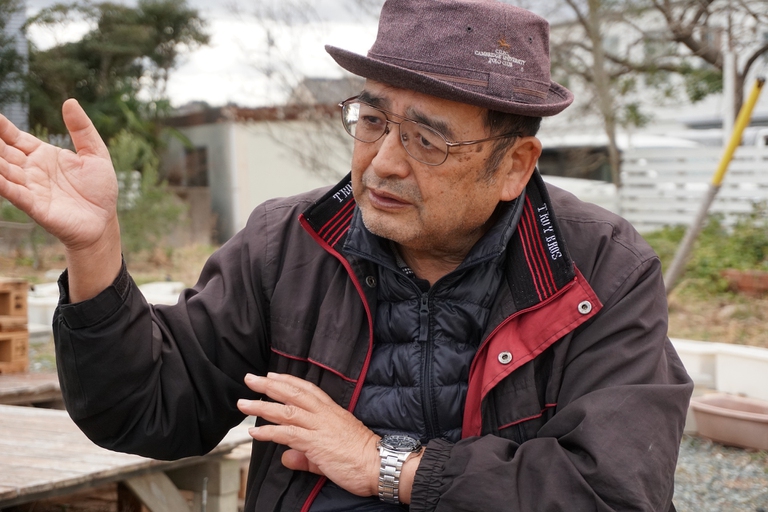
As per tradition after 12 years India held Mahakumbh, the world’s largest spiritual congregation that has been attracting pilgrims from across the globe.
Ten years have passed since the 11 March 2011 disaster, but this chapter is far from over. Travelling through Fukushima, renewal and destruction can be seen side by side, sometimes separated only by a road.
“During the evacuation period, I was living in temporary housing in another part of Fukushima. We were only allowed to visit our homes during the day, and I started planting flowers because everything was so miserable. Now, looking back, I realise that taking care of those flowers was a way to rebuild myself”.
This is only a fragment of Tomoko Kobayashi’s story. Together with her husband she runs a ryokan, a traditional Japanese inn, in Odaka ward, part of Minamisoma city, in Fukushima prefecture. Thanks to her and the other people I met in Hamadori – Fukushima’s eastern region, which looks out onto the Pacific Ocean – I had the privilege of viewing the consequences of the 11 March 2011 disaster through the eyes of those who experienced it first hand. And continue to do so, seeing as this chapter is far from over, even ten years on.
The first time I visited Fukushima, in 2016, Odaka was still closed to residents. Very few commercial activities had restarted, tentatively, but homes were still empty. Since the evacuation order was lifted a year later, 3,650 people have returned; just a fraction of the 13,000 who lived here before 2011. Some have died, including of old age, and others, especially young people and families, have relocated permanently elsewhere. And to think that Odaka is one of the places where life, in some way, seems to have restarted. Other towns remain virtually abandoned either as a matter of their (now ex) residents’ choice, or because radiation levels are still too high.
Odaka, now, is practically new. Many buildings were swept away by the tsunami and have been rebuilt. It is hard to imagine how it was during those terrible days in which it was under water. “The town completely lost its colour. The tsunami left only greyness behind,” Tomoko recalls.
On the 11th of March – or 3/11 as the date is written in Japan – a magnitude-9 earthquake, the strongest ever recorded in the country, hit, its epicentre 130 kilometres off the coast of Tōhoku, Japan’s north-eastern region which includes Fukushima and five other prefectures. The seismological event caused a tsunami of monstrous proportions, a wall of water up to 40 metres high that inundated 500 square kilometres of land in the prefectures of Iwate, Miyagi and Fukushima, washing away 20,000 human lives.
The wave overpowered the seawall of Fukushima Daiichi, at the time one of the largest nuclear power plants in the world. The flooding cut off the emergency generators and, without power, the cooling system of the six reactors was interrupted. The release of hydrogen caused by the exposure of fuel rods to the air provoked explosions in reactors 1, 2 and 3, releasing large quantities of radiation that contaminated a vast area of northern Japan, and beyond.
The details of those hours and days are now well known. The nuclear disaster, which forced over 100,000 people living within 20 kilometres (and over) of the plant to abandon their homes, left a deep mark on Japanese society and politics.
It caused the freezing of the nuclear industry, Prime Minister Naoto Kan to resign, tens of thousands of people to take to the streets to protest nuclear energy, official enquiries such as that chaired by Kiyoshi Kurokawa to condemn the government and TEPCO, the electric utility that owns Fukushima Daiichi. TEPCO bosses faced trial and were acquitted. The disaster’s economic damage has been estimated at 150 billion US dollars, 90 billion have been paid by TEPCO in compensation, and the cost of decommissioning the plant – a process the government hopes to complete in the next 20 or 30 years – will cost 70 billion dollars according to the government, or between 100 and 480 billion according to other estimates. Significant problems remain unsolved, such as what to do with the soil removed to lower radiation levels and radioactive water used to cool the reactors.
Making sense of the complexity of these facts seems impossible. The feeling, especially here in eastern Fukushima, is that this chain of events is still ongoing. The worse of the tragedy caused by the earthquake and tsunami has passed, even though the spectre of death and destruction still hangs in the air, especially in the areas hit hardest by the seaquake such as the city of Ishinomaki in Miyagi. But in some parts of Hamadori, reconstruction hasn’t even begun yet because these areas still remain accessibile due to radioactivity. Along the roads in the no-go area, those that are open to traffic, you’re not allowed to stop, let alone move away from the road. All the buildings – homes, restaurants, shops – are blocked off by temporary gates and residents can visit only with a permit.
In March, the trees are still bare and the rice hasn’t been planted yet. Brown hills and golden fields’ wintery tones are dotted by the delicate white and pink glow of blooming plum flowers. A sign that spring is near. Narrow valleys surrounded by wooded hills turn into open plains while travelling from the mountains that separate the coastal region from the rest of the prefecture, to the sea.
This bucolic and somewhat ordinary scenery is interrupted, in an apparently random way, by the sight of piles of tens up to thousands of large black bags. This is the (temporary) solution to store the soil that has been removed from fields and residential areas as the principal operation to decontaminate the environment. Now another big task is underway; the rebuilding of fields using soil brought from other parts of the prefecture. The shape of terraced rice paddies is discernable in the brown expanses dotted with excavators and construction workers.
The cleanup, however, can’t be take place in forested and mountainous areas. Here, radiation levels remain high, in fact as we drive along a narrow valley surrounded by forest, the Geiger counter starts beeping insistently as radiation increases exponentially. Radioactive isotopes such as cesium-137 remain trapped in the cycle of nature, in which the decomposition of dead organisms fuels the birth and vitality of living ones. It isn’t recommended to eat wild mushrooms and plants, and game meat, such as the boars that are hunted to keep the demographic explosion caused by human depopulation under control.
The contrast with those areas that have reopened and, in part, been repopulated couldn’t be starker. In towns such as Odaka, even agriculture has restarted, with farmers in Fukushima, a prefecture famous for its rice, peaches and many other products, vouching for their crops’ safety. Radioactivity limits adopted in Japan following the disaster are strict, more so than European and American ones, and the system to monitor contamination in foods in this and 16 other prefectures – the results of which are published daily – is extremely advanced. For example, since 2012 every bag of rice produced in Fukushima has been tested. Since 2015, no relevant levels of radiation have been detected in a single one, out of around 10 million a year.
Ryoichi Sato, born and raised in Odaka from a family of farmers, has forced to leave his home for six years. Upon his return in 2017 he founded the company Kohbai Yume Farm (kōbai in Japanese means pink plum flower, yume is dream) to revitalise the land for the sake of his friends and family who perished as a result of the disaster, and for the residents who are still unsure whether to return, he says. He hires young people and, to compensate for the lack of workforce, has adopted smart agriculture machinery and systems, thanks also to the agriculture ministry’s support. “I had never thought about working with young graduates and starting a business, much less one to restore land. In this sense, my life has changed drastically”.
Then there’s Tomoko, who welcomed me, together with all her guests, with open arms. At Futabaya ryokan we’re a motley crew made up of international journalists – two Italians (myself included), one French, one American and a few Japanese – and two people from Tokyo who are here to participate in craft workshops to raise money for the community.
I’m travelling together with Pio d’Emilia, East Asia correspondent for Italian TV network SkyTg24, who has been visiting the area for a decade and who has many friends here. Thanks to his network, every evening there’s someone over for dinner. Sitting around a table and discussing life in the formerly evacuated area – melancholically and with a heavy heart at times, and with great irony and hilarity at others – I feel the strong sense of community here at Tomoko’s place.
“Something good and unexpected that came from reopening this ryokan,” after the evacuation period, “is that it has become a meeting place for many different people,” says its owner, proud of what she has built. In fact, she doesn’t intend to stop. She wants to transform the small plot of land next to the inn in a garden and open a shop to sell the flowers and herbal tea grown in it. There is still a lot to be done, but we move forward one step at a time,” she tells me. “I spent a long time without having anything to do, but these days I’m always busy”.
The words of Yoshiki Konno, a retired salesperson for an electronics company who miraculously survived the tsunami and has returned to live in his hometown of Odaka, are graver. “I tell people to do as we did and study. Don’t believe that nuclear energy is safe”. The restarting of Japan’s reactors is a defeat for Konno and the many voices opposed to this industry. “History always repeats itself,” Konno concludes.
Japan aims to become carbon neutral by 2050 and in parallel the government plans to increase the share of nuclear energy to 20-22 per cent by 2030. More or less the same quota reserved for renewables, which are growing nationally, albeit slowly if compared to Fukushima, which aims to power itself with 100 per cent renewable sources by 2040.
The words of Hideyuki Ban, co-director of the Tokyo-based Citizens’ Nuclear Information Centre, put things into perspective. “Yes, the government wants to reactivate certain plants, but it doesn’t want to build any new ones. 39 reactors are scheduled to restart, but only nine of these have received clearance and only three are actually active at the moment. The reactivation is very slow because many are going to court to block it. Nuclear energy simply doesn’t make sense and it is facing an inexorable decline”.
The restarting of reactors may seem like a return to the past and a dysfunctional system that disappointed Japanese people, brought up with reassurances that nuclear power was safe, and especially the people of Fukushima, a poor region in which, for years, TEPCO plants were synonymous with employment and prosperity. But below the surface of this apparent inertia great changes are in motion.
Fukushima, too, is changing. A transformation that is anything but straightforward for its people. Some have picked up life where they left off, perhaps finding new opportunities in the vacuum left by the catastrophe, some are busy fighting for justice and to improve conditions, and some don’t want to come back. Many believe that the most important thing is to cultivate that great resource, resilience, that allowed many to get through the past ten painful years, even though the wounds they carry will never completely heal. The most important thing, now, it to look to the future. “We old returnees ask ourselves what we want to leave behind,” says Konno. “If young people don’t come back this place will die, no matter what we do. That is why we roll up our sleeves”.
Siamo anche su WhatsApp. Segui il canale ufficiale LifeGate per restare aggiornata, aggiornato sulle ultime notizie e sulle nostre attività.
![]()
Quest'opera è distribuita con Licenza Creative Commons Attribuzione - Non commerciale - Non opere derivate 4.0 Internazionale.
As per tradition after 12 years India held Mahakumbh, the world’s largest spiritual congregation that has been attracting pilgrims from across the globe.
Workers in tea gardens of West Bengal, India, that produces Ctc tea for domestic consumption complain that they have been devoid of basic facilities while political parties make hollow promises during every elections which are never fulfilled.
India is in the middle of the elections, but sadly none of the politicians have uttered a word on man-animal conflict that has been devouring several lives every year.
Manipur, a state in north-east India, is still reeling under the tremors of violence that broke out last year devouring lives and paralyzing the economy.
The government of Tanzania is currently planning to evict more than 80.000 indigenous Maasai people from their ancenstral land
A new UNU-INWEH report on the global bottled water industry reveals the massive scale of this market and the lack of strict quality controls.
Isatou Ceesay founded a social enterprise that is helping to fight plastic pollution and empowering women and young people to gain economic independence.
In 2020, Mihela Hladin made a radical decision that many, in recent times, have probably considered. This is her story, with photos by Matt Audiffret.
The Brazilian government has started evicting illegal gold miners, responsible for the health emergency that has hit the Yanomami people.
